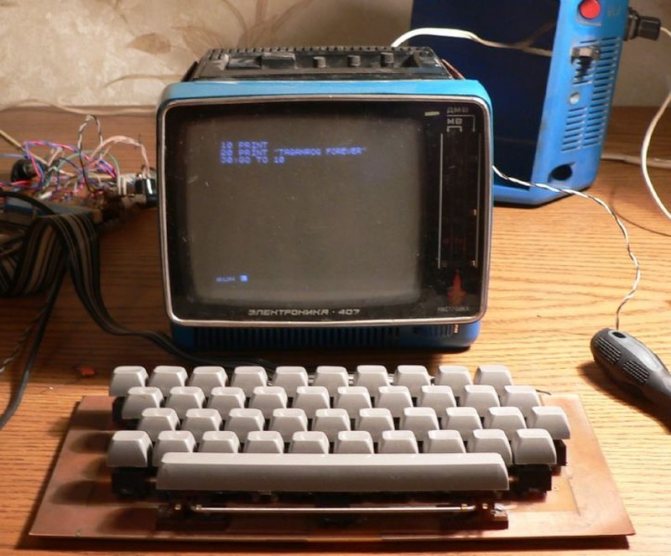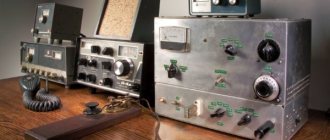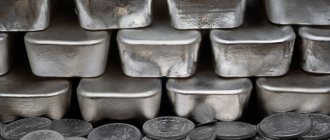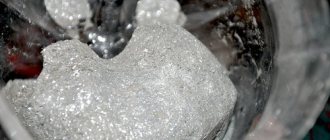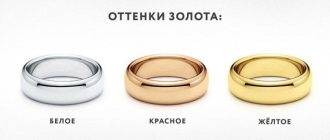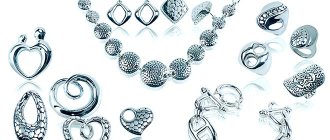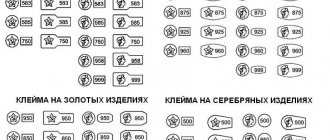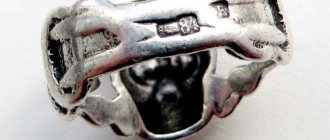Many people still have old tube TVs from the Soviet era, gathering dust on balconies and garages. However, not everyone knows that in Soviet times, some parts/parts were made of pure gold, silver or platinum. One old TV may contain up to several grams of precious metals hidden in the depths of radio tubes or microcircuits.
Which TV parts contain precious metals?
If you need to disassemble an old TV, for example a Chaika or an Erisson, for parts, you should pay attention to some valuable elements for which you can get decent money.
Clue! On the packaging or in the table on the back cover of the lamp TV there is a list of precious metals contained in the equipment, as well as their total quantity.
What parts from an old TV contain precious metals:
- In capacitors. The described elements of television equipment often contain gold and silver. However, palladium or platinum may also be present here. A huge amount of precious metals is concentrated in KM capacitors, as well as in spare parts with tantalum, silver or yellow housing.
- In radio tubes. In the elements described, a grid was usually coated with gold, which was adjacent to the cathode, so that the TV could remain in working condition for a long period of time without repair. Depending on the type of model, tube TV picture tubes may contain approximately 17 grams of gold. Also, other precious metals may be present inside the equipment, such as palladium (no more than 0.2 grams), silver (about 75 grams) and platinum (about 2 grams).
- In the connectors. Such spare parts mainly include palladium and gold. Connectors are purchased by weight. One kilogram of such parts can contain about 25 grams of gold.
- In resistors. Such parts contain large quantities of silver. The composition may also include gold and palladium. In addition, silver alloys are found on the terminals. It is worth remembering that it is in Soviet resistors, which were produced before 1982 with the “diamond” icon, that a sufficient amount of precious metals can be found.
- In transistors. There is gold on the substrates of such parts. In addition, this metal can be located on the contacts of a television channel switch (however, the volume of gold will be very small, about a couple of milligrams).
Read also: Safety precautions when working on a lathe
The most valuable are transistor TVs, since they contain the maximum amount of different precious metals. Tube TVs contain a small amount of metals.
Receivers of spare parts are primarily interested in microcircuits located in a plastic case, LEDs in the channel switching block, transistors and capacitors.
Below you can find a list that shows which TVs contain precious metals and how much (weight is indicated in grams):
- “Vityaz”: gold – 0.3412, silver – 7.4606, platinum – 0.622, palladium – 0.3199;
- "Rainbow-719-1": gold - 0.3135, silver - 7.1795, platinum - 0.6294, palladium - 0.0339;
- "Electron-736": gold - 0.24, silver - 6.33, platinum - 0.225, palladium - 0.0338;
- “Rubin Ts202”: gold – 0.4443, silver – 3.6787.
In principle, almost every TV contains insignificant precious metals. The latest model contains no palladium or platinum at all.
Which lamps are the most valuable in terms of the amount of precious metals
In Soviet televisions, the content of precious metals, namely gold/platinum, is much less than in lamps used in the military industry of that time. Previously, according to radio-electronic technology, a grid located almost close to the cathode was coated with pure gold. The coating was necessary to prevent the cathode from heating the grid, causing electrons to form and causing the TV to explode. For old lamps in some TV models, even the legs were made of similar materials - to extend the time of consumer use.
For example, GMI-19 lamps contain almost 16 g of pure gold. Also, the content of yellow metal (in grams) can be traced in other models:
- 2D9S – 3.0;
- GI-19B – 3.19;
- GKD1 – 600/50 – 7.8;
- GMI11 – 0.9;
- GMI14B – 2.81;
- GMI19B – 16.65;
- GMI24B – 1.8, etc.

Platinum content:
- GI-42B P3 – 1.57;
- GI-43B P3 – 1.63;
- GI-50A P3 – 1.68, etc.
Silver content:
- GI-19B – 5.14;
- GI-24A – 37, 4;
- GI-24B – 48.2;
- GI-26B – 75.0;
- GI-33B - 22.4, etc.

Palladium content:
- GI-39B – 0.14;
- GI-44B – 0.14;
- GI-49B – 0.1, etc.
If you consider that 1 g of pure gold costs 40 dollars, silver - 0.54, platinum - 30, palladium - 31, then you can make good money selling radio tubes, the main thing is to know how to extract the precious metal and where it can be sold.
How to extract?
To extract precious metals from a TV, you can use several methods:
- "Royal vodka" Heat the lamp to a temperature of 79 degrees, and then dip it into a solution of sulfuric and hydrochloric acid (add a liter of sulfuric acid to 250 g of hydrochloric acid). After dissolution, a layer of precious metal will lie at the bottom of the container.
- Nitric acid. Lower the radio tube into it and wait until all the details dissolve. Precious metals that are at the bottom must be sprinkled with soda so as not to burn the skin of your hands when touched.
- Electrolysis. To separate the precious metal from the alloy (copper with brass), you will need to dip the part in sulfuric acid (you can also use hydrochloric acid), the temperature of which should reach +25 degrees. A plate of iron or lead can be used as a cathode. The current density should reach 0.1 - 1A/dm2. Using this method, you can separate gold from spare parts.
As you can see, depending on the type of TV model, the content of precious metals in picture tubes and other parts will be different. In order not to waste a lot of time and effort on extracting valuable metals, it is best to sell the entire TV to those who buy such equipment for subsequent refining.
Read also: Attachments for polishing machine
Many people probably know that Soviet equipment used precious metals to coat the contacts of various parts. Today we will talk about such details. In some devices (almost all) there are capacitors, transistors and contact terminals in which gold was used! But first things first. Let's start with transistors. The list is very large - kt809g, kt 3102, kt3107, we are talking about those transistors that have a metal case. Such transistors are often found in radios, VCRs and domestically produced televisions.

Many gold-plated parts can also be found in calculators from the Soviet Union. On televisions, gold-plated transistors are most often found in antenna units. Maybe many people don’t know, but gold can also be found in transistors with plastic cases, for example, break everyone’s favorite KT814, 815, 816, 817. Inside, the crystal is mounted on a gold-plated copper plate. Also with low-power transistors, CT 3102,3107 in plastic cases. In almost all RF transistors, the metal inside the case is gold-plated.
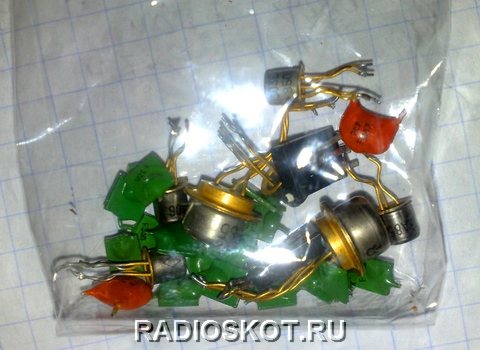
The amount of gold in such transistors is of course negligible, but sometimes there are powerful low-frequency transistors that are completely gold-plated! Just once I came across the KT803 transistor. And then I found out that from 10 such transistors you can get 1.5 grams of pure gold! But unfortunately, such parts do not lie on the street.

Capacitors: palladium capacitors are often found in domestically produced video equipment. Palladium is a noble metal that belongs to the platinum family. The Soviet Union also issued a commemorative coin made of pure palladium in 1989. The metal itself is silver in color. In radio devices there are capacitors of green and orange color, they use palladium. Silver is most commonly found in contact coatings. In the Soviet Union, almost everything was coated with silver - terminals, contacts, capacitor legs, wires of radio circuits, transistor terminals, etc. There are many ways to remove gold plating, the most famous is an acid solution, which we will talk about in the following articles - AKA .
This article serves as a help for clients who find it difficult to find radio components to be purchased for the purpose of extracting precious metals. As is known, the greatest concentration of expensive components is concentrated in Soviet-style military equipment. But few people realize that a significant proportion of precious metals is contained in radio components that were used in the assembly of Soviet household appliances.
Read also: C255 GOST 27772 88 steel grade analogue

Why is gold used in devices?
Experts advise looking for precious metals in microcircuits, connectors, semiconductors, and other radio components.
At the dawn of radio electronics, corrosion-resistant conductive circuits and plates could be made from precious metals. Gold and other precious metals are still used to make SIM cards and microcircuits, but the details have become much finer. Based on the gold content in radio components, professionals determine the age of equipment. The high content of precious metals in radio tubes means that it was applied to the grid in the cathode region to correct electrons.
Gold is used where corrosion is excluded and sparking must be prevented. When externally disassembled, precious metals can be difficult to notice; they are used in the form of:
- microscopic parts or elements;
- foil several microns thick;
- coatings made by spraying or galvanic method.
Most of the precious metals are in old Soviet-style parts. According to statistics, more than 80% of silver used in industry is consumed by the electrical engineering industry for electrical and radio equipment.
Used picture tubes are a source of secondary resources. The high content of precious metals in cathode ray tubes is explained by the complexity of the design: electron gun, control system. It is difficult to recycle them; old TVs gather dust in dachas and garages, although they can become a source of income.
TVs
During the existence of the USSR, domestic industry produced two types of televisions - tube and transistor. In this case, tube TVs are very poor in terms of the content of precious metals; in particular, only the output beam tetrode, labeled as 6P36S, 6P44S, 6P45S or GU50, is of value. That is, it makes no sense to engage in a special search for this technology. unless it comes to hand by chance. But transistor models are more generously stuffed with precious metals, since it is transistors of the KT 502-503, KT-310, KT-814 and KT-940 brands that contain precious metals, in particular gold and silver. Some TV models are equipped in small quantities with green and red KM brand capacitors, as well as yellow K10-17 capacitors.
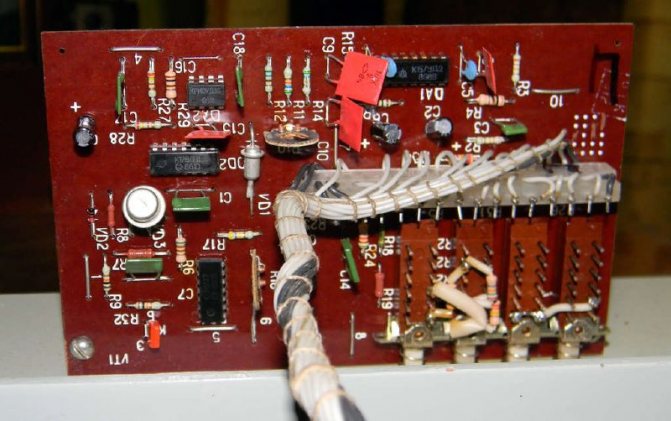
Computers
Unlike calculators, Soviet computers contain a larger number of green KM capacitors, as well as yellow K10-17 capacitors, that is, when disassembling Soviet-style computer equipment you can provide yourself with a very tempting amount of money. A nice addition is a number of plastic chips, the internal filling of which contains gold.
